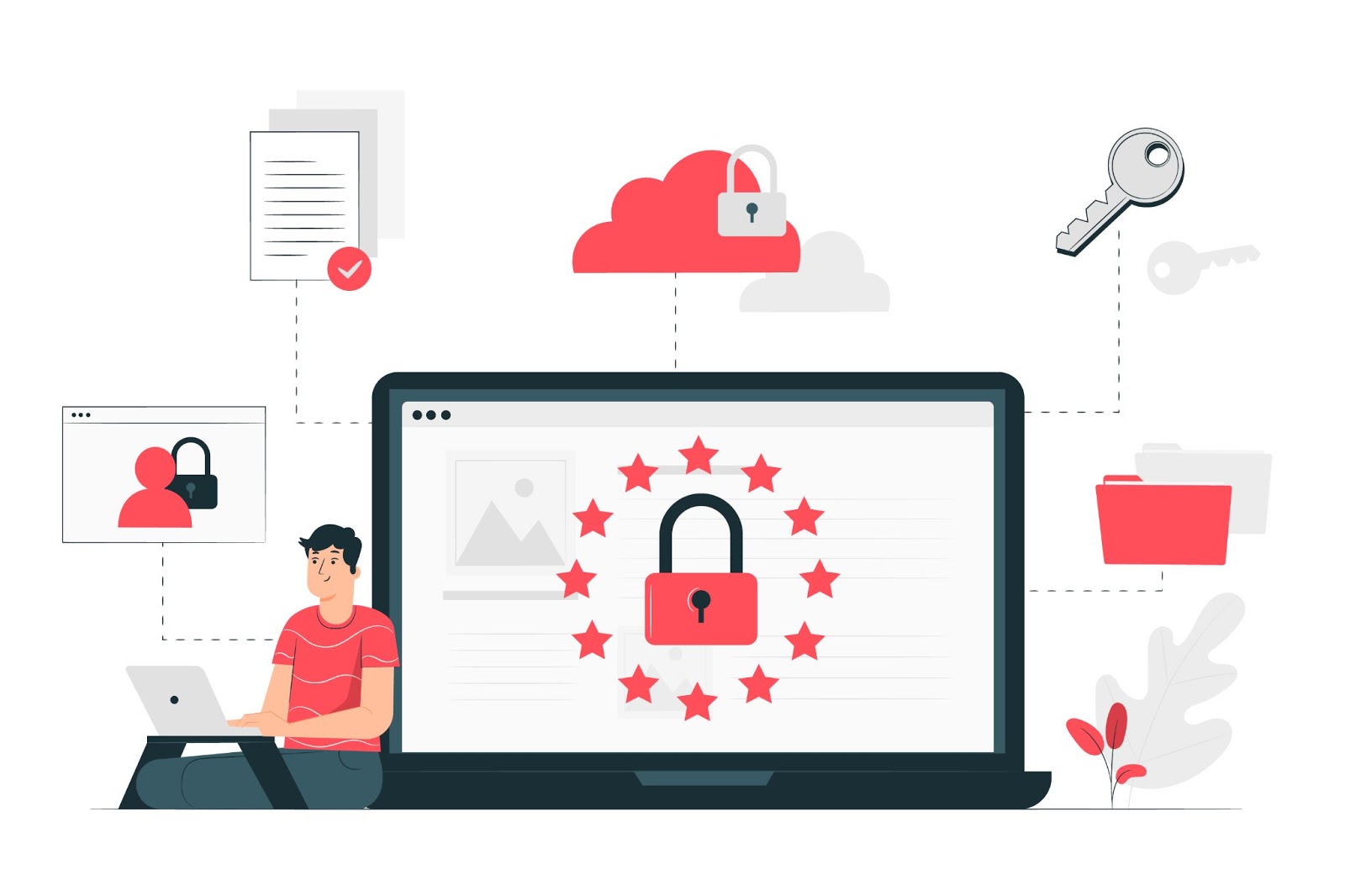As you may already know, employee onboarding is vital for your company. The main reason is that the onboarding process can help new hires settle in the right way and learn everything there is to learn about your company, the work environment, conditions, and your company culture.
However, onboarding is not solely designed to help you retain new hires and avoid costly turnovers. As a matter of fact, the onboarding process is an ideal time to train your new hires well and help them familiarize themselves with your company’s policies and procedures.
That being said, onboarding is also the perfect moment to include security awareness training for your employees. But why is security awareness so important? One of the main factors behind successful data breaches is human error.
For example, one of your employees may fall for a phishing scam and give cybercriminals a backdoor into your company’s network. With that in mind, here are a few ways to integrate security awareness training into employee onboarding.
READ ALSO: Essential Cyber Security Plan for Small Business
Table of Contents
Start With The Basics
You cannot expect new hires to be cybersecurity experts. The onboarding process is there so that you can teach them and provide them with adequate training. However, you also can’t overwhelm them with advanced methods immediately.
After all, they are new hires who just started working at your company. That means they’re just beginning to figure out how stuff works, and you are there to help them adjust to the new environment.
That said, don’t rush things because you might face a 20% higher turnover rate if you do. The main reason is that most turnovers happen within the first 45 days of employment if the onboarding process isn’t good enough. Therefore, start with the basics if you plan on integrating security awareness into the onboarding process.
For example, educate new hires about the importance of using strong passwords, as well as about the importance of not using the same password for multiple accounts. This can drastically reduce network vulnerabilities that are the result of human error.
Prolong the Onboarding Process
Many companies either completely neglect the onboarding process or have a short one. In such cases, employees are left alone to figure out everything, which reduces their motivation, morale, and productivity.
This will inevitably lead to turnovers sooner rather than later. The onboarding process must be long enough for new hires to adapt and adjust appropriately. Therefore, your onboarding process should be at least a 90-day program, if not more.
The main reason is that you’re integrating security awareness into the onboarding process. Aside from regular training and education about company policies and whatnot, you also include cybersecurity training.
Of course, the longer the onboarding process is, the more resources it will require. Many companies are hesitant when allocating resources to onboarding, even though you’re investing in training your employees to be as effective as possible.
Fortunately, you can find a solution that will favor both sides. For example, you can try a paperless employee onboarding method where most communications are conducted via mobile apps. That way, employees can receive information and communicate with the HR department whenever needed, and this can go on as long as you need it to.
Include Various Threat Training
Cybercriminals usually target employees first instead of trying to go through a company’s network defenses because many employees are unaware of the potential threats they can come across. Hackers can effortlessly access your company’s network if they can exploit this.
That’s why it’s of the utmost importance to include various cybersecurity threats training in your onboarding process. The most important thing is for employees to learn to recognize threats so they don’t fall victim to them.
They don’t have to know how to deal with the issue and recognize the threat so that they can alert your IT staff on time. After all, it’s not their job to be cybersecurity specialists unless you hire them specifically for that task. Here are some of the common threats your employees should know about:
- Computer viruses
- Phishing scams
- Malware
- Ransomware
- Social engineering scams
READ ALSO: 5 Software Tools to Help You Improve Your Business Processes
Compliance Training
Often, the onboarding process teaches new hires how to remain compliant with various company policies ranging from legal to procedural-related rules. This is also an excellent opportunity to include cybersecurity policy compliance training.
Cybersecurity policies are designed to prevent data breaches and protect any sensitive information a company may store on its computers. Compliance training helps educate employees on following the rules regarding remaining compliant with those policies.
That being said, around 60% of data breaches were possible due to an unaware employee’s mistake. Compliance training ensures that such errors are avoided altogether. Through onboarding, your employees will be able to learn how to follow procedures and ensure that the data they’re working with is kept safe.
The onboarding process is extremely valuable when it comes to not just retaining your new hires but also when it comes to training them in the best way possible. That’s why companies need to develop an excellent onboarding strategy to welcome new hires and help educate them about everything they need to know.
Securing Your Workforce: Security Awareness Training Onboarding FAQs
New hires are a company’s fresh start, and cybersecurity awareness should be part of the journey from day one. Here are some frequently asked questions to help you integrate security awareness training into your employee onboarding process:
How can training be applied in the onboarding process?
Security awareness training can be seamlessly woven into the onboarding process in several ways:
- Dedicated Modules: Include modules specifically focused on cybersecurity best practices, password hygiene, and identifying phishing attempts.
- Integrated Learning: Embed security awareness topics on company policies and procedures within broader training modules.
- Interactive Activities: Use engaging quizzes, simulations, or scenario-based training to make learning interactive and memorable.
READ ALSO: Integrate Your Calls To CRM System
How do you implement security awareness training?
Here’s a step-by-step approach:
- Define Training Objectives: Identify the critical cybersecurity knowledge and behaviors you want new hires to gain.
- Choose Delivery Methods: Select a mix of online modules, in-person sessions, or video presentations to cater to different learning styles.
- Develop Engaging Content: Create informative and engaging training materials that resonate with new employees.
- Schedule Training: Integrate security awareness training into the onboarding timeline, ensuring it’s completed before new hires access sensitive systems.
- Measure and Improve: Track training completion rates and assess knowledge retention through follow-up quizzes or surveys. Use this data to improve your training program continuously.
What is security awareness training for new employees?
This training equips new hires with the knowledge and skills to identify and mitigate cybersecurity threats. It empowers them to make informed decisions that protect company data and systems.
What is the purpose of security awareness training?
The primary purpose is to create a culture of cybersecurity within your organization. You can significantly reduce the risk of human error-related security incidents by training employees.
Are training and onboarding the same thing?
No, onboarding is a broader process that integrates new hires into the company culture, familiarizes them with their roles, and equips them with the necessary skills. Training, specifically security awareness training in this context, is one crucial aspect of the onboarding process.
Conclusion
Integrating security awareness training into employee onboarding isn’t just a box to check. By prioritizing security education from day one, you empower employees to participate actively in your organization’s cybersecurity posture. This proactive approach fosters a culture of security awareness that benefits everyone.
Equipped with the knowledge to identify threats, report suspicious activity, and practice safe computing habits, your employees become your first line of defense. Remember, security is an ongoing process. Regularly revisit security protocols and keep your employees informed about the latest threats.
By investing in a security-conscious workforce from the very beginning, you can build a more resilient organization, confident in its ability to navigate the ever-changing digital landscape.
SUGGESTED READS
- How IT Professionals Can Monitor Remote Employees’ PCs Without Violating Privacy Laws
- Breachers Gonna Breach: Protect Your Organization From Internal Threats
- Shut Cybercrime Door With Cybersecurity Training For Employees
- CyberVista Review: Reliable Cybersecurity Awareness Training Company
- The Importance Of Cybersecurity In Business
- Just How Critical Is Customer Onboarding?
- 7 Cyber Security Training Awareness Essentials For Employees
About the Author:
Meet Angela Daniel, an esteemed cybersecurity expert and the Associate Editor at SecureBlitz. With a profound understanding of the digital security landscape, Angela is dedicated to sharing her wealth of knowledge with readers. Her insightful articles delve into the intricacies of cybersecurity, offering a beacon of understanding in the ever-evolving realm of online safety.
Angela's expertise is grounded in a passion for staying at the forefront of emerging threats and protective measures. Her commitment to empowering individuals and organizations with the tools and insights to safeguard their digital presence is unwavering.
Daniel Segun is the Founder and CEO of SecureBlitz Cybersecurity Media, with a background in Computer Science and Digital Marketing. When not writing, he's probably busy designing graphics or developing websites.










